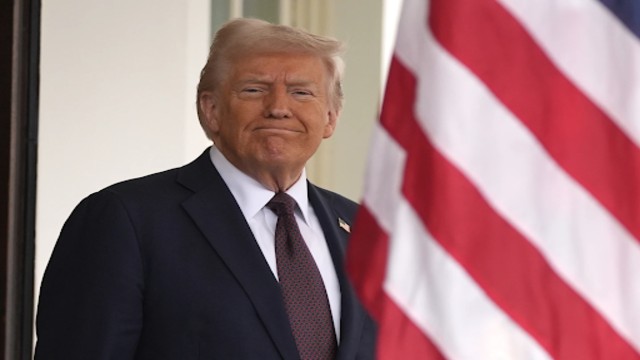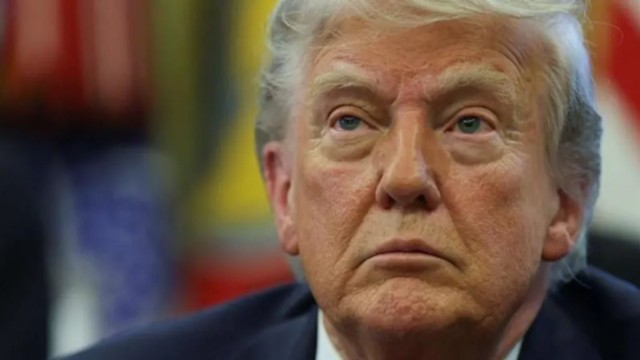
President Donald Trump at the White House, Thursday, Feb 27, 2025. AP Photo
Former U.S. President Donald Trump has announced plans to impose tariffs on imports from Canada and Mexico starting March 4. Additionally, he will double the existing 10% tariff on goods imported from China.
Tariffs as a Measure Against Drug Trafficking
In a Truth Social post, Trump claimed that illicit drugs, particularly fentanyl, are entering the U.S. at alarming levels. He argued that imposing tariffs would pressure these nations to take stricter action against drug smuggling.
“We cannot allow this scourge to continue harming the USA,” Trump stated. “Until it stops or is significantly reduced, the proposed tariffs will go into effect as scheduled.” He confirmed that China would also face an increased tariff of 10% on the same date.
Economic and Market Reactions
The announcement has stirred concerns about inflation and economic instability. Experts warn that higher tariffs could lead to increased prices for consumers and disruptions in industries like automotive manufacturing.
Financial markets reacted negatively to the news. The S&P 500 index fell by 1.6% on Thursday, erasing most of the gains seen since Trump’s election win in November.
When asked about concerns that tariffs would ultimately be paid by consumers and businesses, Trump dismissed them as a “myth.” However, economic analysts argue that such taxes usually lead to higher prices.
Tariff Details and Reactions from Canada and Mexico
Trump’s plan includes a 25% tariff on imports from Mexico and Canada. However, Canadian energy products, including oil and electricity, will face a lower 10% tariff. While the justification for the tariffs revolves around drug trafficking and immigration control, both Canada and Mexico have highlighted their ongoing efforts to combat these issues.
- Canada: The government has appointed a fentanyl czar and invested over $1 billion to strengthen border security. Prime Minister Justin Trudeau insisted that there is no fentanyl crisis at the U.S.-Canada border and warned of retaliatory tariffs on U.S. products.
- Mexico: President Claudia Sheinbaum stated that her government would maintain a diplomatic approach. She expressed hope for a resolution before March 4. Meanwhile, Mexico has already deployed 10,000 National Guard members to its northern border.
Mexico’s Foreign Affairs Secretary met with U.S. officials in Washington to discuss intelligence-sharing efforts to enhance drug enforcement operations. Sheinbaum emphasized the importance of protecting the free trade agreement negotiated under Trump’s first administration.
China’s Response and Additional Tariffs
Trump also targeted China, doubling existing tariffs on goods linked to fentanyl production. China’s Commerce Minister urged the U.S. to resolve trade disputes through dialogue rather than aggressive tariff measures.
Economic analysts estimate that the new tariffs could cost U.S. consumers between $120 billion and $225 billion annually. The additional China tariffs alone might add $25 billion in expenses.
Broader Trade War Risks
Trump’s proposed tariffs could spark a larger trade war. He hinted at imposing a 25% tariff on European imports and additional taxes on autos, computer chips, and pharmaceuticals.
The president also announced plans to revoke exemptions on his 2018 steel and aluminum tariffs while adding taxes on copper imports. These moves have raised concerns about global trade tensions, which could slow economic growth.
Consumer Confidence Declines
The uncertainty surrounding Trump’s trade policies is affecting consumer sentiment. The Conference Board’s consumer confidence index dropped seven points in February, marking the largest monthly decline since August 2021. Inflation expectations also surged, with average 12-month projections rising from 5.2% to 6%.
Economic analysts caution that escalating tariffs could lead to higher prices and slower growth, potentially contradicting Trump’s campaign promise to lower inflation. However, Trump remains committed to his trade policies, emphasizing that reciprocal tariffs will be implemented on April 2.
As the March 4 deadline approaches, businesses, consumers, and international leaders await further developments that could shape the future of global trade.















